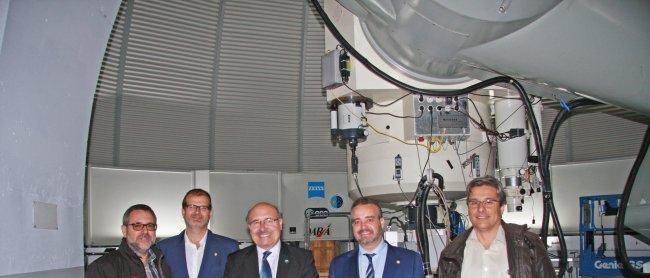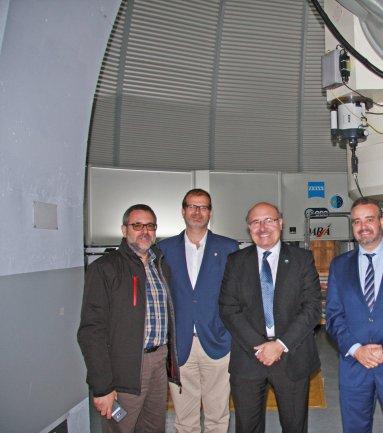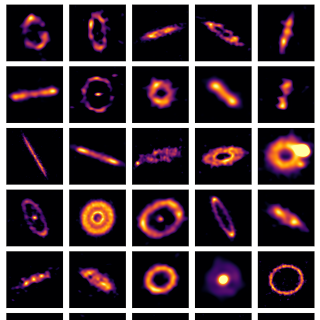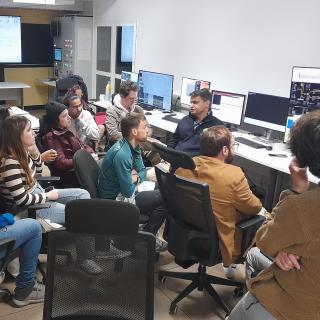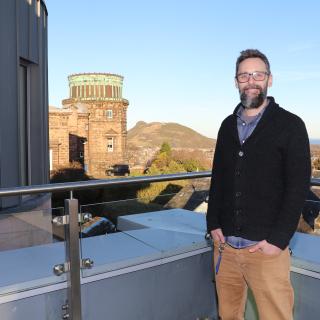The Rector of the University of Las Palmas de Gran Canaria (ULPGC), Rafael Robaina, and the Vice-Rector of Research, José Pablo Suárez, together with the Professor of Image Technology of the same university, Juan Ruiz Alzola, visited the Instituto de Astrofísica de Canarias (IAC) and the Teide Observatory (Izaña, Tenerife). Accompanied by the Director of the IAC, Rafael Rebolo, they were told about the research and technology projects at the IAC, among them the Project for cooperation with industry and technology transfer IACTec, working for the development of commercial depth in the Canaries and the rest of Spain. They also were shown the workshops and the laboratories of the Instrumentation Division. Afterwards, they visit the Teide Observatory with its administrator, Miquel Serra-Ricart, and the manager of Telescope Operations, Álex Oscoz, to visit some of the installations, such as the QUIJOTE experiment, which is searching for traces of the Big Bang, and the Optical Ground Stations (OGS), designed for laser communications with satellites, experiments of quantum entanglement, and tracking of space debris.
Left to right:Miquel Serra-Ricart, administrator of the Teide Observatory; José Pablo Suárez, Vice-Rector of Research of the ULPGC; Rafael Rebolo, Director of the IAC; Rafael Robaina, Rector of the ULPGC, and Juan Ruiz Alzola, Proffesor of Image Technolog
Advertised on
